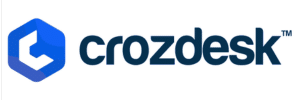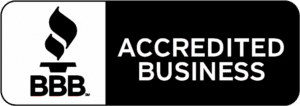💡 Key Takeaways:
- Personalization Drives Engagement: Tailor marketing with customer data to boost loyalty and sales.
- Omnichannel Enhances Experience: Integrate online and offline channels for seamless shopping.
- Promotions Spur Action: Use limited-time offers to create urgency and increase purchases.
- Loyalty Programs Retain Customers: Reward repeat buyers to foster long-term relationships.
What Is Retail Marketing?
Retail marketing is the strategic set of activities and tactics that businesses use to promote and sell products or services directly to consumers in physical stores or online environments. Its primary goals are to attract new customers, retain existing ones, increase sales, and build brand loyalty.
Key aspects of retail marketing include:
- Understanding the target market: Identifying customer needs, preferences, and behaviors to tailor marketing messages effectively.
- Retail marketing mix (4Ps or 6Ps): Managing product selection, pricing strategies, store location or online presence (place), promotion methods, and sometimes personnel and presentation to create a compelling retail experience.
- Channels and tactics: Using a combination of in-store merchandising (product displays, signage), digital marketing (websites, SEO, social media), email marketing, loyalty programs, and customer relationship management (CRM) tools to engage customers and drive purchases.
- Branding and customer experience: Establishing a unique brand identity and delivering superior customer experiences to foster loyalty and differentiate from competitors.
Retail marketing is crucial because it helps businesses increase visibility, boost sales, strengthen brand recognition, and gain a competitive advantage in a crowded marketplace. It integrates both traditional and digital strategies to meet evolving consumer expectations and market trends.
Key Components of Retail Marketing
Retail marketing is structured around a set of core components, often referred to as the “Retail Marketing Mix.” These elements are essential for attracting customers, driving sales, and building a sustainable retail business. Below are the key components, each explained concisely and directly:
1. Product
- Definition: The goods or services offered for sale.
- Essentials: Product selection, variety, quality, branding, and packaging. Retailers must align their product range with customer needs and preferences, monitor product life cycles, and differentiate from competitors.
2. Price
- Definition: The amount charged to the customer for a product or service.
- Essentials: Pricing strategies must balance profitability with perceived value. Considerations include production costs, competitor pricing, market demand, and customer willingness to pay. Tactics like discounts and psychological pricing are common.
3. Place
- Definition: The location or platform where products are sold and how they reach customers.
- Essentials: This covers physical store locations, online stores, and distribution channels. Key factors include store layout, accessibility, convenience, and delivery logistics. The goal is to make products easy to find and purchase.
4. Promotion
- Definition: The methods used to communicate with customers and persuade them to buy.
- Essentials: This includes advertising, sales promotions, social media, email marketing, and in-store events. Effective promotion increases brand awareness and drives traffic to retail locations or websites.
5. People
- Definition: Staff and customer service representatives who interact with customers.
- Essentials: Employees play a critical role in customer experience, offering product knowledge and assistance and building relationships that foster loyalty. Training and responsiveness are vital.
6. Presentation (Physical Evidence)
- Definition: The visual and sensory aspects of the retail environment.
- Essentials: Store design, layout, visual merchandising, and atmosphere. Effective presentation enhances the shopping experience and can influence purchasing decisions.
7. Process
- Definition: The procedures and flow of activities in delivering products and services.
- Essentials: This includes checkout, after-sales service, returns, and customer support. Efficient processes ensure customer satisfaction and operational effectiveness
Types of Retail Marketing Strategies
Retail marketing strategies are targeted approaches retailers use to attract customers, drive sales, and build brand loyalty. Below is a detailed enumeration of the primary types of retail marketing strategies, each with a clear explanation of its purpose and application.
In-Store Marketing
This strategy focuses on enhancing the shopping experience within the physical retail space to influence customer behavior. Retailers use tactics like strategic product placement, eye-catching displays, and in-store promotions to encourage impulse purchases.
Placing high-margin items at eye level or near checkout counters increases their visibility. In-store signage and interactive elements, such as product demonstrations, also engage customers and provide information that can lead to immediate purchases.
Digital Marketing
Digital marketing leverages online platforms to reach customers through social media, email, and websites. Retailers create targeted ads on platforms like Instagram or Google to promote products to specific demographics.
Email campaigns with personalized offers, such as discounts based on past purchases, drive repeat business. Search engine optimization (SEO) ensures the retailer’s website ranks high in search results, making it easier for potential customers to find products online.
Content Marketing
This strategy involves creating valuable content to attract and engage customers without directly selling. Retailers publish blogs, videos, or guides that address customer needs or interests, such as tutorials on how to use a product or style tips for fashion items. A home improvement store might share DIY project videos to showcase its tools.
Loyalty Programs
Loyalty programs incentivize repeat purchases by rewarding customers for their continued business. Retailers offer points, discounts, or exclusive perks for frequent shoppers, redeemable for future purchases. For example, a coffee shop might provide a free drink after ten purchases. These programs foster customer retention, increase lifetime value, and encourage consistent engagement with the brand.
Promotional Marketing
This strategy uses limited-time offers, discounts, or special deals to create urgency and drive sales. Retailers may run flash sales, seasonal promotions, or bundle deals to attract price-sensitive customers. A “buy one, get one half-price” offer can clear inventory while appealing to bargain hunters. Clear communication of the offer’s value and deadline is critical to prompting immediate action.
Omnichannel Marketing:
Omnichannel marketing integrates multiple channels—physical stores, online platforms, mobile apps, and social media—to create a seamless customer experience. Retailers ensure consistent messaging and branding across all touchpoints, allowing customers to switch between channels effortlessly. A customer might browse products online, reserve an item via an app, and pick it up in-store.
Influencer Marketing
Retailers collaborate with influencers with significant online followings to promote products to their audience. Influencers create authentic content, such as product reviews or styled photos, to showcase the retailer’s offerings. A beauty brand might partner with a makeup artist on YouTube to demonstrate its products.
Event Marketing:
This involves hosting or sponsoring events to engage customers and promote the brand. Retailers may organize in-store workshops, product launches, or community events to create memorable experiences. For instance, a bookstore might host an author signing to draw crowds and boost sales. Events create buzz, strengthen customer relationships, and provide opportunities for direct interaction with the brand.
Referral Marketing
Referral marketing encourages existing customers to recommend the retailer to others in exchange for rewards. Retailers offer incentives like discounts or gift cards for successful referrals. For example, a clothing retailer might give a $10 coupon to both the referrer and the new customer. This strategy taps into word-of-mouth trust, expanding the customer base cost-effectively.
Personalized Marketing
This strategy uses customer data to deliver tailored experiences, offers, or recommendations. Retailers analyze purchase history, browsing behavior, or demographic information to customize promotions. Sending a birthday discount or recommending products based on past purchases increases relevance.
Each strategy serves a distinct purpose, but retailers often combine them to maximize impact. The choice of strategy depends on the target audience, product type, and business goals.
Effective Retail Marketing Strategies
The most effective retail marketing strategies leverage data, technology, and consumer behavior to drive customer engagement, increase sales, and build long-term loyalty. Below is a list of highly effective retail marketing strategies, each described in concise, well-formed sentences.
Personalized Marketing
Retailers use customer data, such as purchase history or browsing behavior, to deliver tailored offers and recommendations. For example, sending personalized emails with product suggestions based on past purchases increases relevance and conversion rates. This strategy fosters stronger customer connections by addressing individual preferences.
Omnichannel Marketing
This approach integrates physical stores, online platforms, and mobile apps to create a seamless shopping experience. Retailers ensure consistent branding and messaging, allowing customers to browse online and order in-store effortlessly. Omnichannel strategies enhance convenience and cater to diverse shopping habits, boosting retention.
Loyalty Programs
Retailers reward repeat customers with points, discounts, or exclusive perks to encourage ongoing engagement. For instance, a program offering a free item after a set number of purchases builds customer loyalty. These programs increase lifetime value and incentivize consistent spending.
Influencer Marketing
Partnering with influencers with strong online followings helps retailers authentically reach targeted audiences. Influencers create content like product reviews or tutorials, such as a fashion influencer showcasing a retailer’s clothing line. This strategy leverages trust and credibility to drive brand awareness and sales.
Promotional Marketing
Limited-time offers, discounts, or bundle deals create urgency and attract price-sensitive customers. For example, a retailer might run a flash sale with clear deadlines to prompt immediate purchases. This strategy effectively clears inventory and drives short-term sales spikes.
Seasonal and Launch Events
Host product launches, seasonal sales, or special events to generate excitement, drive foot traffic, and increase visibility
Subscriptions and Recurring Sales Models
Offer subscription services for products to ensure steady revenue and enhance customer retention. These strategies are effective because they align with modern consumer expectations for personalization, convenience, and value, while leveraging digital tools to maximize reach and impact.
Benefits of Retail Marketing
Here are some of the key benefits of retail marketing:
Increased Sales
Retail marketing strategies, such as promotions or targeted advertising, drive customer interest and encourage purchases. For example, a well-executed flash sale can create urgency, prompting immediate buying decisions. By highlighting products and offers, marketing directly contributes to higher revenue and inventory turnover.
Enhanced Customer Loyalty
Marketing initiatives like loyalty programs or personalized offers foster stronger customer connections. Rewarding repeat purchases with points or exclusive discounts, for instance, incentivizes customers to return. This builds long-term relationships, increasing customer lifetime value and reducing churn.
Improved Brand Awareness
Retail marketing, through channels like social media or influencer partnerships, increases visibility among potential customers. A viral social media campaign or a memorable in-store event can introduce the brand to new audiences. Greater awareness strengthens brand recognition and attracts a broader customer base.
Better Customer Engagement
Strategies like content marketing or in-store experiences create meaningful customer interactions. For example, a retailer sharing DIY videos or hosting product demonstrations engages customers beyond transactions. Engaged customers are more likely to trust the brand and make repeat purchases.
Data-Driven Insights
Retail marketing often involves collecting and analyzing customer data, such as purchase history or preferences. Personalized marketing campaigns, for instance, rely on data to tailor offers, revealing what resonates with specific audiences. These insights enable retailers to refine strategies, optimize campaigns, and improve decision-making.
Competitive Advantage
Effective marketing differentiates a retailer from competitors by highlighting unique value propositions. For example, an omnichannel approach offering seamless online-to-offline shopping can outshine competitors with less integrated systems. Standing out in a crowded market helps attract and retain customers.
Increased Foot Traffic
In-store marketing tactics, like eye-catching displays or local events, draw customers to physical locations. A retailer hosting a community workshop or offering in-store exclusives can boost store visits. Higher foot traffic often translates to increased sales and opportunities for upselling.
Online vs Offline Retail Marketing
Online and offline retail marketing each have distinct advantages that shape consumer behavior and business strategies. Offline retail marketing excels in providing a tangible, sensory shopping experience where customers can see, touch, and try products, supported by personalized in-person customer service and immediate product gratification.
It often drives foot traffic through local store presence and in-store promotions, fostering direct customer engagement and brand trust. However, it is limited by store hours, geographic reach, and generally higher operational costs.
In contrast, online retail marketing offers unmatched convenience with 24/7 accessibility, a vast product selection beyond local inventory, and often better pricing due to lower overheads. It leverages digital tools like targeted ads, email marketing, and personalized recommendations to efficiently reach a broader, sometimes global, audience.
Yet, it lacks the sensory experience and immediate product possession of offline shopping. Increasingly, hybrid models (e.g., buy online, pick up in-store) are bridging these gaps, combining the strengths of both to meet evolving consumer expectations and create seamless shopping journeys.
Tools & Platforms to Improve Your Retail Marketing
Modern retail marketing success hinges on leveraging a mix of digital and physical tools that streamline operations, personalize customer engagement, and provide actionable insights. Here are some of the top tools and platforms that can elevate your retail marketing strategy.
Customer Relationship Management (CRM) Systems:
CRM systems, like Salesforce or HubSpot, centralize customer data to enable personalized marketing. They track purchase history, preferences, and interactions, allowing retailers to create targeted email campaigns or loyalty programs. Retailers can send tailored promotions to customers who frequently buy specific products, increasing repeat purchases and brand loyalty.
Point of Sale (POS) Systems :
KORONA POS is a cloud-based point of sale system that integrates advanced inventory management, CRM, and real-time analytics to optimize retail marketing. It allows retailers to capture customer data at checkout, build profiles, and launch loyalty programs, enabling targeted promotions based on purchase history.
Retailers can leverage KORONA POS to offer discounts to frequent shoppers, driving repeat business. Like with WooCommerce, its eCommerce integration syncs in-store and online inventory, ensuring consistent marketing across channels.
KORONA POS stands out due to its robust CRM functionality, which supports personalized email and SMS campaigns, and its real-time reporting, which provides insights into sales trends and customer behavior, enabling data-driven marketing decisions.
Email Marketing Platforms:
Platforms like Mailchimp or Constant Contact facilitate targeted email campaigns to engage customers. Retailers can send newsletters, abandoned cart reminders, or personalized offers to drive sales. You might use Mailchimp to automate birthday discounts and encourage purchases.
Social Media Management Tools:
Tools like Hootsuite or Buffer streamline social media marketing by scheduling posts and analyzing engagement. Retailers can promote products, share user-generated content, or run ad campaigns on platforms like Instagram or Facebook.
eCommerce Platforms:
Platforms like Shopify or WooCommerce enable retailers to create online stores that complement physical locations. They support product listings, payment processing, and inventory syncing, allowing seamless omnichannel marketing. It helps promote online exclusives to drive traffic to their website.
Analytics and Reporting Tools:
Tools like Google Analytics or Tableau provide insights into customer behavior, website traffic, and campaign performance. Retailers can track metrics like conversion rates or popular product categories to refine marketing strategies.
How to Build a Retail Marketing Plan?
To build a retail marketing plan, follow these structured steps to ensure clarity, focus, and measurable outcomes:
1. Define Clear Objectives
Establish specific, measurable goals for your retail marketing plan, such as increasing sales by 10% or boosting store traffic by 15% within six months. Align these objectives with your overall business strategy, whether it’s expanding market share or enhancing brand loyalty. Clear goals provide direction and a benchmark for evaluating success.
2. Identify Your Target Audience
Analyze your customer base to understand their demographics, preferences, and behaviors. Use data from purchase histories, surveys, or online analytics to segment your audience, such as young professionals or budget-conscious families. A well-defined audience ensures your marketing efforts are relevant and impactful.
3. Conduct a SWOT Analysis
Evaluate your retail business’s strengths, weaknesses, opportunities, and threats (SWOT). For example, a strength might be a loyal customer base, while a weakness could be limited online presence. This analysis helps you leverage advantages, address gaps, and anticipate market challenges in your plan.
4. Choose Marketing Strategies
Select a mix of marketing strategies that suit your audience and goals, such as personalized email campaigns, in-store promotions, or social media advertising. For instance, a loyalty program can retain customers, while influencer partnerships can attract new ones. Prioritize strategies based on budget, resources, and expected impact.
5. Set a Budget
Determine the financial resources available for marketing activities, including advertising, events, and technology. Allocate funds across chosen strategies, ensuring cost-effective options like digital ads are balanced with high-impact offline efforts like in-store events. A clear budget prevents overspending and guides resource allocation.
6. Develop a Content Calendar
Create a timeline for your marketing activities, outlining when and how each campaign will be executed. For example, schedule holiday promotions in Q4 or social media posts twice weekly. A content calendar ensures consistency, aligns with seasonal trends, and keeps your team organized.
7. Implement Omnichannel Integration
Ensure a seamless customer experience across online and offline channels, such as allowing online browsing with in-store pickup. Use consistent branding and messaging to create a cohesive journey, whether customers shop via your app, website, or physical store. Omnichannel integration enhances convenience and engagement.
8. Measure and Track Performance
Define key performance indicators (KPIs) like sales growth, website traffic, or customer retention rates to evaluate your plan’s success. Use tools like Google Analytics for digital campaigns or POS data for in-store results. Regularly track performance to identify what works and adjust as needed.
9. Refine and Optimize
Review your marketing plan quarterly to assess its effectiveness based on KPI results. For example, if email open rates are low, test new subject lines or personalize content further. Continuous refinement ensures your plan remains relevant and adapts to changing customer needs or market trends.
Examples of Retail Marketing Campaigns
Retail marketing campaigns are targeted initiatives designed to promote products, engage customers, and drive sales through creative and strategic efforts. Below is an enumerated list of five notable examples of retail marketing campaigns, each with a detailed explanation of its execution and impact.
IKEA’s “BookBook” Campaign
A humorous take on Apple’s product launches, this campaign presented IKEA’s paper catalog as the revolutionary “BookBook.” It gained attention through clever satire and creative humor, making the traditional catalog feel fresh and increasing customer interest in the product range.
Nike’s “Nike By You” Customization Platform
This campaign allows customers to design personalized footwear through an intuitive online tool. Its effectiveness comes from enhanced customer ownership and engagement, reinforced by influencer partnerships and user-generated content showcasing custom designs, thereby deepening brand loyalty.
REI’s #OptOutside Campaign
A values-driven campaign where REI closed its stores on Black Friday to encourage customers and employees to enjoy the outdoors instead of shopping. This counterintuitive strategy built strong brand authenticity and community engagement by aligning the campaign with the core values of its audience, generating substantial social media buzz.
Pringles’ #PringlesFlipFlag Campaign
Fans voted on which country’s flag should appear on digital ads during the 2024 FIFA World Cup by scanning QR codes on limited-edition cans. This interactive and engaging campaign leveraged event excitement and user participation to amplify brand visibility and customer interaction.
Apple’s “Get a Mac” Campaign
A long-running TV campaign comparing Macs and PCs through humorous character sketches, which strengthened Apple’s brand as innovative and user-friendly. This campaign exemplifies the power of creative storytelling to differentiate a brand in a competitive market.
Coca-Cola’s “Share a Coke” Campaign
Replacing the Coca-Cola logo with popular individual names on bottles created a highly personalized and shareable experience, encouraging customers to find and share bottles with friends and family, boosting sales and social engagement.
Make a Winning Strategy for Your Retail Business
Without data, you’re just another person with an opinion. That is why, when planning your business plan, you must consider setting up point of sale software that will help you track financial, performance, revenue, and operational metrics.
These key business metrics will help you define profitability and tailor your marketing strategy. They will also let you know what products and departments are driving revenue so you can make confident decisions.
With our point-of-sale system, KORONA POS also helps you track inventory levels and set reorder points to optimize your stock. Once the sale is complete, our POS system will give you immediate access to sales and profit reports.












